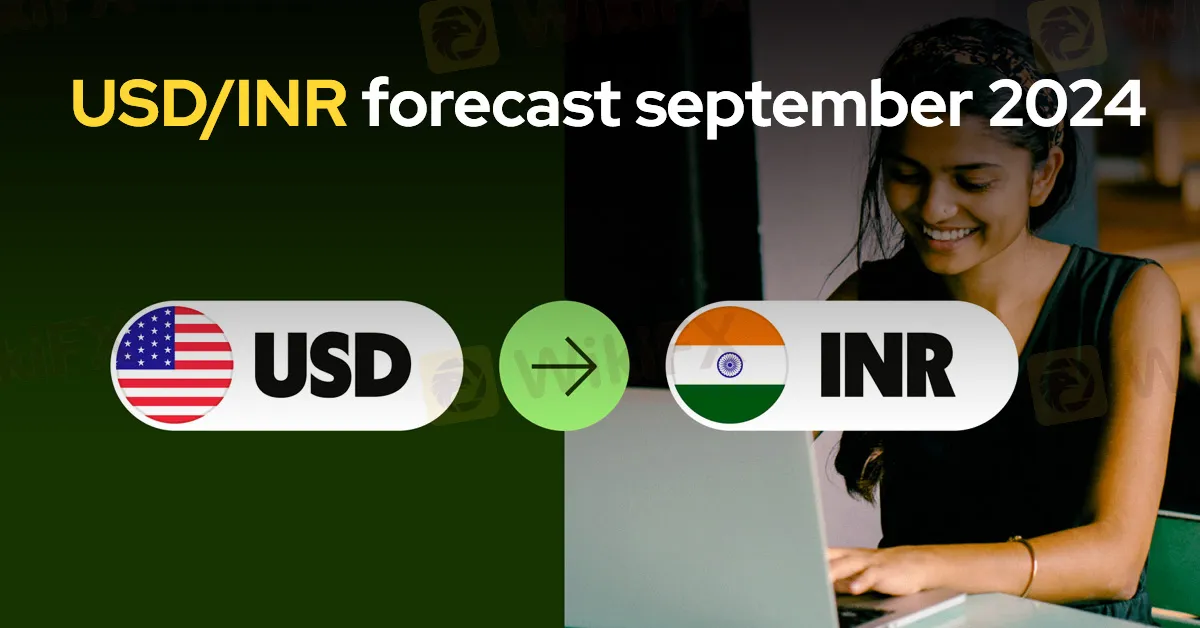简体中文
繁體中文
English
Pусский
日本語
ภาษาไทย
Tiếng Việt
Bahasa Indonesia
Español
हिन्दी
Filippiiniläinen
Français
Deutsch
Português
Türkçe
한국어
العربية
USD/INR Monthly Forecast: September 2024
Abstract:The USD/INR currency pair has exhibited significant volatility, staying near the higher end of its long-term price range. Since early March, the pair has consistently set new peaks and ventured into higher-price territories.

According to report, the USD/INR currency pair has exhibited significant volatility, staying near the higher end of its long-term price range. Since early March, the pair has consistently set new peaks and ventured into higher-price territories. On August 5th, the USD/INR briefly surged above the 84.1000 mark, driven by exaggerated reactions in the Asian markets to USD/JPY fluctuations and a selloff in Japan's Nikkei index. However, market stability quickly returned, and the pair settled back to more familiar values within a day.
Interestingly, after the rapid August 5th spike, the USD/INR did not revert to its previous price levels. Instead, the 83.7700 area lost its support, and the 83.8600 zone began to provide new support. This change persisted until around August 16th, when the pair tested slightly lower values. A notable low of 83.6820 was recorded on August 20th before it swiftly rebounded.
Mid-August Lows and Market Reactions
The mid-August low may have led some traders to speculate that the Reserve Bank of India (RBI) might soon alter its policies to strengthen the Indian Rupee. However, this did not materialize. Despite broader forex market trends showing USD weakness, the USD/INR has maintained its elevated price range. This behavior suggests that the RBI might be tolerating higher levels in the USD/INR, possibly to test market reactions or manage inflationary pressures.
Outlook for September
The persistence of the USD/INR near the 83.9000 level indicates more than just random fluctuations. It reflects a strategic stance by the RBI, potentially hinting at a higher price range tolerance for the pair. The Indian government may be balancing the benefits of a weaker Rupee—such as boosting export demand—with the inflationary consequences it brings. As September approaches, it remains to be seen whether the USD/INR will continue to test resistance levels or if the Indian government will take action to address the currency's strength.

Disclaimer:
The views in this article only represent the author's personal views, and do not constitute investment advice on this platform. This platform does not guarantee the accuracy, completeness and timeliness of the information in the article, and will not be liable for any loss caused by the use of or reliance on the information in the article.
Read more

SEC Approves Hashdex and Franklin Crypto ETFs on Nasdaq
The SEC has approved crypto index ETFs by Hashdex and Franklin Templeton, including Bitcoin and Ethereum, marking a milestone in crypto asset investment.

North Korean Hackers Steal $1.3bn in Cryptocurrency in 2024
Over $2.2bn in cryptocurrency stolen in 2024, with North Korean hackers accounting for $1.3bn. Discover how cyber theft impacts the evolving crypto landscape.

ASIC Sues Binance Australia Derivatives for Misclassifying Retail Clients
ASIC accuses Binance Australia of misclassifying 500+ retail clients as wholesale, denying key consumer protections for crypto derivatives. Penalties and reforms are underway.

Revolut Leads UK Neobanks in the Digital Banking Revolution
Revolut dominates the UK neobanking scene with 15.6M downloads in 2024, surpassing traditional banks. Explore how innovation drives this fintech leader’s growth.
WikiFX Broker
Latest News
ASIC Sues Binance Australia Derivatives for Misclassifying Retail Clients
Geopolitical Events: What They Are & Their Impact?
Top 10 Trading Indicators Every Forex Trader Should Know
Why Do You Feel Scared During Trade Execution?
Revolut Leads UK Neobanks in the Digital Banking Revolution
Fusion Markets: Safe Choice or Scam to Avoid?
SEC Approves Hashdex and Franklin Crypto ETFs on Nasdaq
North Korean Hackers Steal $1.3bn in Cryptocurrency in 2024
Currency Calculator


